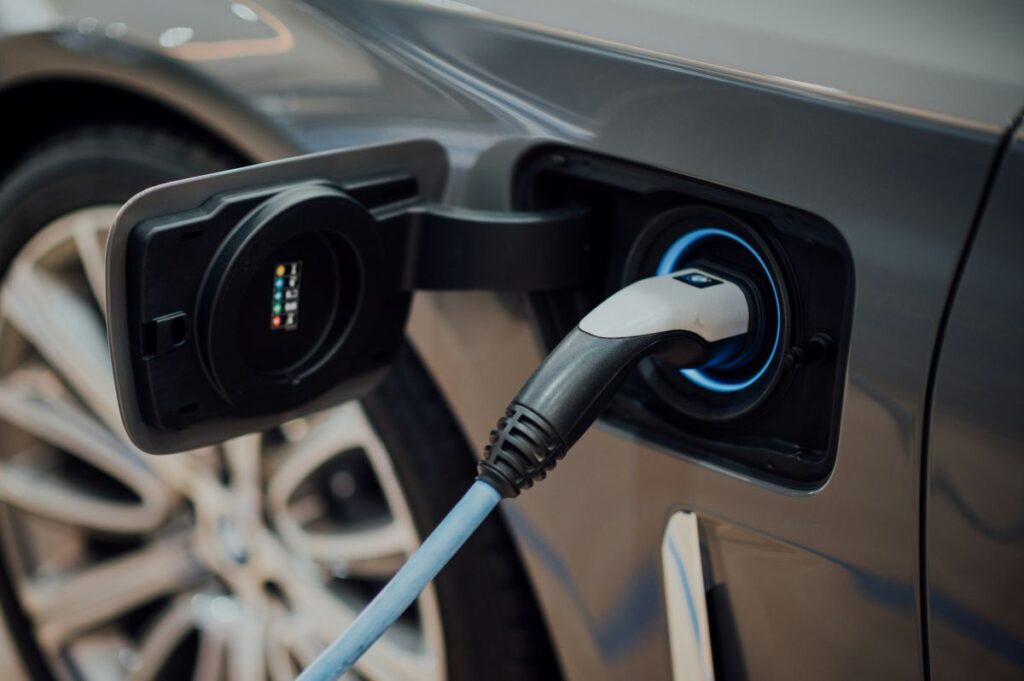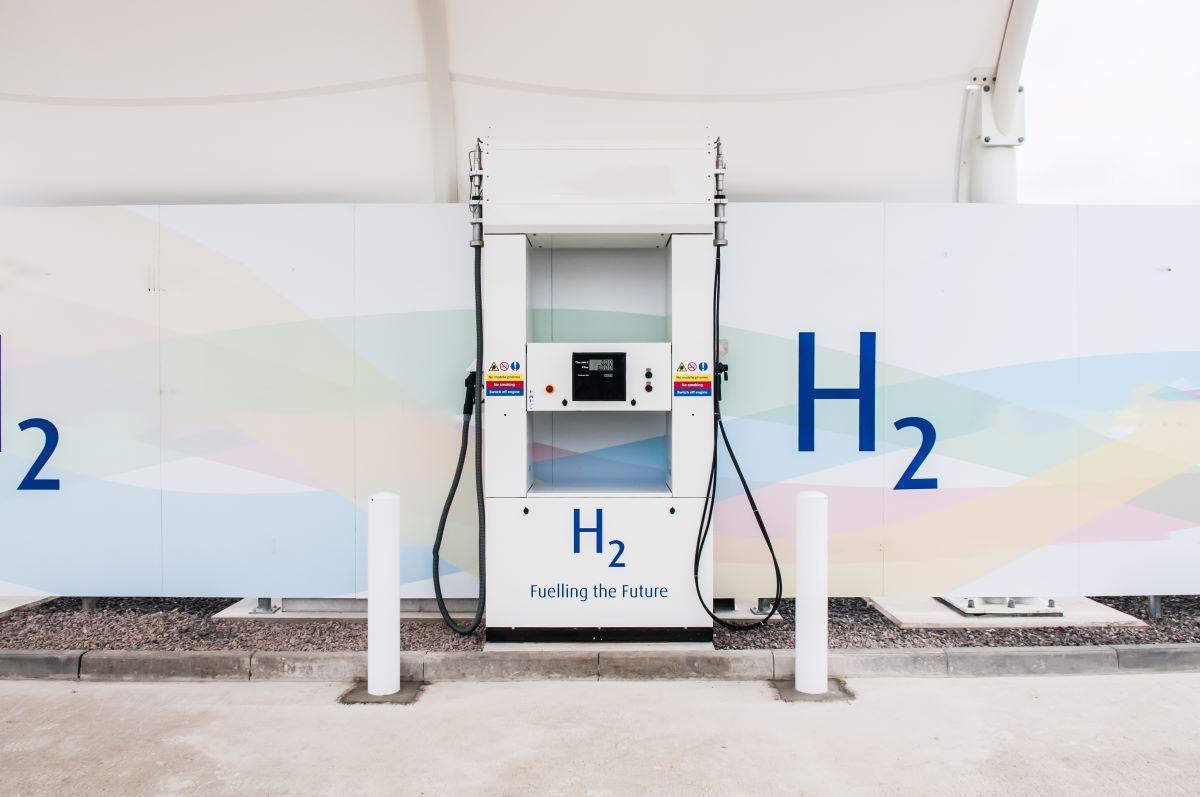As the world moves to more eco-friendly fuels to power industry and travel, you might be wondering just how environmentally friendly these alternative energy sources are.
Here we explore hydrogen specifically and whether it’s a cleaner alternative to its petrol, diesel and electric counterparts.
What do we know about the eco-friendliness of hydrogen?

When hydrogen is used as a fuel, the only by-products it produces are water vapour and heat. This means that using it as an energy source could help reduce carbon emissions. However, the eco-friendliness of H2 depends on more than this, specifically around how it’s produced.
There are several ways hydrogen can be produced, the main ones being:
- Green hydrogen: made from clean energy sources, such as solar or wind energy. These are then used to “electrolyse” water, i.e. split water (H2O) into oxygen (O2) and hydrogen (H2).
- Blue hydrogen: made from fossil fuels (mainly natural gas), but aims to store most of the carbon dioxide underground through a process called carbon capture, usage and storage (CCUS).
- Grey hydrogen: currently the most widely used way of creating hydrogen – and it’s one of the least environmentally friendly too. Like blue hydrogen, it’s made from fossil fuels (usually natural gas), but no CO2 is captured and stored; instead, it’s released into the atmosphere.
In the best-case scenario, all hydrogen would be made from green hydrogen. However, that is easier said than done, as we’d need to upgrade clean energy sources significantly to produce hydrogen at a high enough scale to fuel different industries and vehicles.
Short-term sacrifice for long-term gain?
So, what is the solution?

Many experts think that the best way to solve this issue is to use blue hydrogen as a transitional fuel before scaling up green hydrogen.
The natural gas network is extensive in the UK, meaning we could more easily repurpose the existing infrastructure to produce, transport and distribute blue hydrogen fuel. As this framework already exists, it’s more capable of fitting our needs in the short to medium term while the government invests in clean energy sources and electrolysers to produce more green hydrogen.
Switching from grey hydrogen to blue hydrogen will, at the very least, allow us to reduce the amount of carbon dioxide released into the atmosphere.
The risks of continuing to depend on grey and blue hydrogen
However, there are some vocal opponents to the idea that blue hydrogen should be used as a “stepping stone” to green hydrogen.

Research suggests that, in practice, blue hydrogen isn’t all that much better for the environment than grey H2. Although the aim is to capture 90 to 95% of the carbon dioxide produced, usually a much smaller proportion is captured. For instance, in one study, it was found that only 48% of CO2 was stored, and the rest was released into the atmosphere.
In addition to this, more natural gas is needed to power the carbon capture element of the process, which produces more “fugitive methane emissions” (i.e. leaking methane) for blue hydrogen than grey hydrogen.
As methane is worse for the environment than carbon dioxide over its lifetime, blue hydrogen might not be much better than grey.
There are also some concerns that carbon dioxide could leak from its underground storage, though according to the Intergovernmental Panel on Climate Change (IPCC), this risk is very minimal.
The report explains that “the fraction retained in appropriately selected and managed geological reservoirs is very likely to exceed 99% over 100 years and is likely to exceed 99% over 1,000 years.”
A study from 2021 backs up the idea that blue hydrogen isn’t all that much better than grey hydrogen. It suggests that “total carbon dioxide equivalent emissions for blue hydrogen are only 9%-12% less than for grey hydrogen”, meaning it’s perhaps not as low carbon as we’ve been led to think.
This calls into question the UK’s hydrogen strategy paper, which sets out a plan to move industries away from grey hydrogen and transition to blue and green H2 production.
Investing in green hydrogen might be the better option

Although existing infrastructure could be used to help scale up blue hydrogen production, new infrastructure would still have to be created to capture and store carbon dioxide. The UK government has already committed £21.7 billion over 25 years to CCUS clusters in the North West and North East of England – money that could have otherwise gone into investing in renewable energies like wind and solar to help scale up green H2 production.
Scaling up renewable energies doesn’t just have to be used for green hydrogen either. While the demand for H2 is still relatively low, wind and solar power could:
- Be fed into the national grid, which would help decarbonise the electricity sector
- Power electric vehicles (EVs)
- Heat homes
- Meet commercial and industrial electricity needs
Excess energy could also be stored for future use when needed.
Granted, the UK has invested £300 billion into renewable energies since 2010, £24 billion of which was invested in the six months between September 2023 and March 2024 alone.
Do we use much hydrogen in the UK at the moment?
Hydrogen is integral to a number of different industries in the UK, including in chemical processes (such as making methanol and ammonia) and in refineries, where crude oil is turned into usable petroleum products.
This means that there are already opportunities to transition grey hydrogen to green to negate greenhouse gas emissions.
How green are hydrogen cars compared to electric vehicles?

If we were to compare a hydrogen vehicle running on green H2 with an EV, electric vehicles would come out on top. Before a car can use hydrogen, renewable electricity must first be converted into H2 through electrolysis, then stored and transported before being converted back into electricity in the vehicle’s fuel cell.
There are usually energy losses at each stage of the process. Research from McKinsey suggests that the efficiency of fuel cell electric vehicles (FCEVs) is as low as 35% for the duration of a FCEV vehicle’s life (known as “well-to-wheel” emissions) and around 30% for H2 vehicles with internal combustion engines (ICE). The well-to-wheel efficiency of a battery electric vehicle (BEV), on the other hand, is around 70%.
This means that, for every 100kWh of energy produced, FCEVs would only be able to use 35kWh from this, while BEVs would use 70kWh.

That being said, most hydrogen advocates acknowledge that BEVs are the better choice for most private cars.
With the average distance per car journey being around 6.5 miles in the UK (correct in 2023, government data; table NTS0101), it makes sense that most people would get along fine with electric vehicles despite their limited range and long charging times.
But where hydrogen cars shine is on longer, more complicated trips, such as those undertaken by heavy goods vehicles (HGVs), taxis, emergency services, field service engineers and even for private car owners who make regular long-distance journeys.
As a result, in spite of the inefficiencies around green hydrogen FCEVs, they can still be useful in areas that are harder to electrify. It’s better to think of the two as complementary rather than conflicting.
Instead, it’s better to compare how clean hydrogen vehicles are against traditional petrol and diesel vehicles.
How clean are hydrogen vehicles compared to petrol and diesel vehicles?

If we were to compare the environmental impact of hydrogen vehicles against their petrol and diesel counterparts, the comparison is a lot clearer.
A white paper released by the International Council on Clean Transportation (ICCT) states that, for heavy-duty vehicles (HDV), a green hydrogen-powered vehicle would save up to 89% of greenhouse gas (GHG) emissions compared to a conventional ICE HDV. They go on to explain that this is “almost the same amount of GHG emission savings as battery electric HDVs using only renewable energy.”
The paper highlights the importance of switching to green hydrogen, though. Savings are as low as 15% for fuel cell HDVs that use hydrogen from fossil fuelled sources.

A further study from ICCT showed that passenger cars fuelled by green hydrogen “would result in 76% to 80% lower life-cycle GHG emissions for FCEVs” compared to gasoline vehicles – slightly less efficient than HDVs, but still a noticeable difference.
Whilst manufacturing FCEVs does still produce carbon emissions, the same can be said for traditional ICE vehicles. As FCEVs only emit water as a byproduct, this means that no CO2, NOx, or particulate matter emissions are emitted from the tailpipe, which is where FCEVs excel.
Beyond this, refining crude oil into petrol or diesel and transporting it to petrol stations is also energy intensive and contributes to greenhouse gas emissions. But if hydrogen fuel were transported using H2 vehicles, GHG emissions throughout this process could be minimised too.
So what’s the verdict?
We’re far from the utopic vision of seeing green hydrogen-fuelled vehicles on the road on a large scale. But when government plans do come to fruition, they will likely have a positive impact on the environment when compared to their ICE counterparts.
The jury is still out as to how effective blue hydrogen is as a stepping stone for green hydrogen; only time will tell how the government’s plans will play out.
Get hydrogen car insurance with Adrian Flux
We’re one of the very few insurance companies in the UK that offer hydrogen car insurance as well as cover for electric and hybrid vehicles.
With a team made up of many car enthusiasts, it’s no surprise that we want to show our support for hydrogen ICE vehicles, which maintain the sound and feel of a traditional internal combustion engine vehicle while also helping the country reach net zero.
If you’re thinking about getting a hydrogen vehicle, call us on 0800 369 8590 for a quote, or book a callback at a time that suits you.

